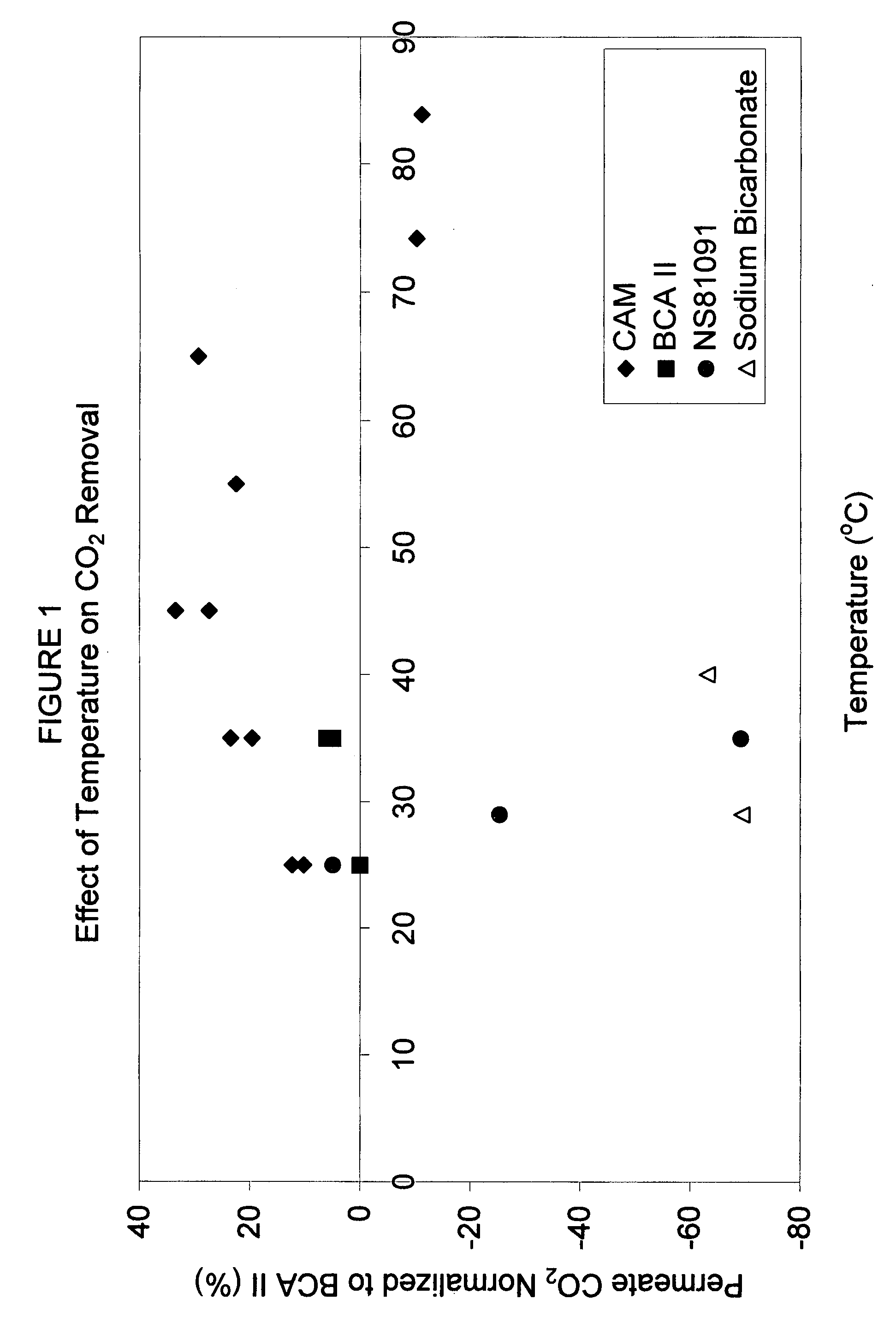Novel enzyme compositions for removing carbon dioxide from a mixed gas
a technology of carbon dioxide and composition, applied in the direction of dispersed particle separation, separation process, disinfection, etc., can solve the problems of prior art physical or chemical means not readily allowing segregation among gases with similar physical properties, and prior art does not effectively solve the problem of not offering a solution
- Summary
- Abstract
- Description
- Claims
- Application Information
AI Technical Summary
Problems solved by technology
Method used
Image
Examples
Embodiment Construction
[0015]FIG. 1 illustrates experimental results for Carbon dioxide capture in a hollow fiber reactor normalized for comparison to bovine carbonic anhydrase II. As the data show, above about 40 degrees the only system still separating Carbon dioxide was the CAM isozyme system.
[0016]FIG. 2 shows data for the permeate stream of a typical contained liquid membrane reactor where the separation is catalyzed by the conventional catalysts and by the isozyme of the invention CAM.
[0017]FIG. 3 shows data for the retentate stream of the same separation. Each data set clearly shows that the CAM enzyme is the only system operable in the range of 40 to 85 degrees C.
[0018] The inventive concept is to use thermophilic enzymes that can drive the engineering applications to new areas of use. Data shown in FIGS. 1 and 2 illustrate that other carbonic anhydrase isozymes are unsuited for certain separations as they denature due to the high operating temperature. In contrast the CAM isozyme continues to ...
PUM
| Property | Measurement | Unit |
|---|---|---|
| Angle | aaaaa | aaaaa |
| Temperature | aaaaa | aaaaa |
Abstract
Description
Claims
Application Information
 Login to View More
Login to View More - R&D
- Intellectual Property
- Life Sciences
- Materials
- Tech Scout
- Unparalleled Data Quality
- Higher Quality Content
- 60% Fewer Hallucinations
Browse by: Latest US Patents, China's latest patents, Technical Efficacy Thesaurus, Application Domain, Technology Topic, Popular Technical Reports.
© 2025 PatSnap. All rights reserved.Legal|Privacy policy|Modern Slavery Act Transparency Statement|Sitemap|About US| Contact US: help@patsnap.com



